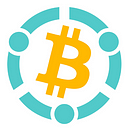ViaBTC Introduction丨 Things Novice Miners Need to Know About Ethereum
Ethereum is the world’s second-largest cryptocurrency by market capitalization, second only to Bitcoin. With the popularity in the crypto world always far ahead of other minor coins, it once replaced the industry leader Bitcoin, becoming the most searched cryptocurrency word on Google. Of the increasing number of miners who have turned to Ethereum, many are very inadequately informed about Ethereum. What is Ethereum and how does its mining work? Let’s take a look today.
Before explaining what is Ethereum, I would like to introduce one person. His name is Vitalik Buterin, the founder of Ethereum and also dubbed “V God” in China. As everyone knows, geniuses usually show extraordinary talents at young ages. Vitalik Buterin is no exception. He started programming at the age of four when other children were playing in the mud. At the age of seven, the boy stuffed his computer with complex mathematical graphs. Five years later, he was able to make his own games in C++. As a 17-year-old senior high school student, he got involved in Bitcoin and wrote articles for a publication to earn Bitcoin. Buterin attended the University of Waterloo at the age of nineteen but dropped out of it after just eight months. This reminds us much of Bill Gates, Buffett, and Mark Zuckerberg. Geniuses indeed share remarkably similar experiences. In 2013, Buterin argued that Bitcoin needed a scripting language for application development. However, when his idea failed to gain agreement in the Bitcoin community, he proposed the development of a new platform with a scripting language. By the end of 2013, the Ethereum Whitepaper made a striking appearance in the title: “Ethereum: A Next-Generation Smart Contract & Decentralized Application Platform”. Afterward, Ethereum has gradually gained a strong foothold as the world’s second-largest cryptocurrency by market capitalization under the leadership of Vitalik Buterin.
So, what is Ethereum exactly? What makes it defeat numerous opponents and become the second-largest cryptocurrency in the world? Ethereum is an open blockchain platform that allows any user to create and harness blockchain technology-based decentralized applications. Like Bitcoin, it is also a decentralized, open-source project jointly created by all users. The difference between the two cryptocurrencies lies in that Ethereum is more of a platform where everyone can develop various apps; Bitcoin is positioned as a peer-to-peer payment system, which is more like gold, a store of value.
Coins need to be mined in the Bitcoin system. So is ETH in the Ethereum network. Similar to Bitcoin, Ethereum also adopts the proof-of-work (PoW) consensus mechanism, where mining income is calculated as the sum of block rewards, income from transaction fees, and uncle block rewards. Like in the Bitcoin system, Ethereum miners need to solve puzzles with mining rigs in exchange for block rewards. However, Ethereum has a much faster block generation rate than Bitcoin. A block is mined every 12–15 seconds in Ethereum, where difficulty adjustment is coded in the algorithm to happen automatically and keep mining time of blocks around 12 seconds. Miners receive 2 ETH per block as a reward, and Ethereum doesn’t have an issuance limit. The income from transaction fees is a small amount of money users pay to the Ethereum network so as to complete transactions. Unlike the aforesaid two types of revenue that also exist in the Bitcoin system, uncle block rewards turn out to be a peculiarity of Ethereum. In the Ethereum system, if multiple miners dig out new blocks at the same block height, only one of these blocks gets validated, and others are called uncle blocks if they are referenced by future blocks. Uncle blocks also yield rewards. A regular block can contain up to two uncle blocks. Miners will receive a reward of 1/32 per uncle block included. As to the Bitcoin network, orphan blocks are the blocks that are temporarily forked and not on the main chain (the longest chain). Mining orphan blocks yields no reward in the Bitcoin system.
To counteract the centralization trend brought about by the use of the application-specific integrated circuit (ASIC) miner in the Bitcoin system, Ethereum adopts a specific algorithm for proof-of-work called “ethash”, which requires strong memory support to avoid too many blocks being generated by a small number of powerful nodes. This is also an improvement in Ethereum compared to Bitcoin.
Fortunately, Ethereum 2.0, which adopts the proof-of-stake (PoS) consensus mechanism, is under continuous development and will go live soon. Compared with the laborious and inefficient PoW mechanism, the PoS mechanism will be a good way to achieve distributed consensus with fewer resources. However, some industry experts are skeptical about whether Ethereum can operate smoothly after being upgraded to the PoS mechanism. The launch of Ethereum 2.0 will provide both an opportunity and a challenge for miners!
For more about the blockchain industry, you can google ViaBTC. A vast sea of information is awaiting you!
